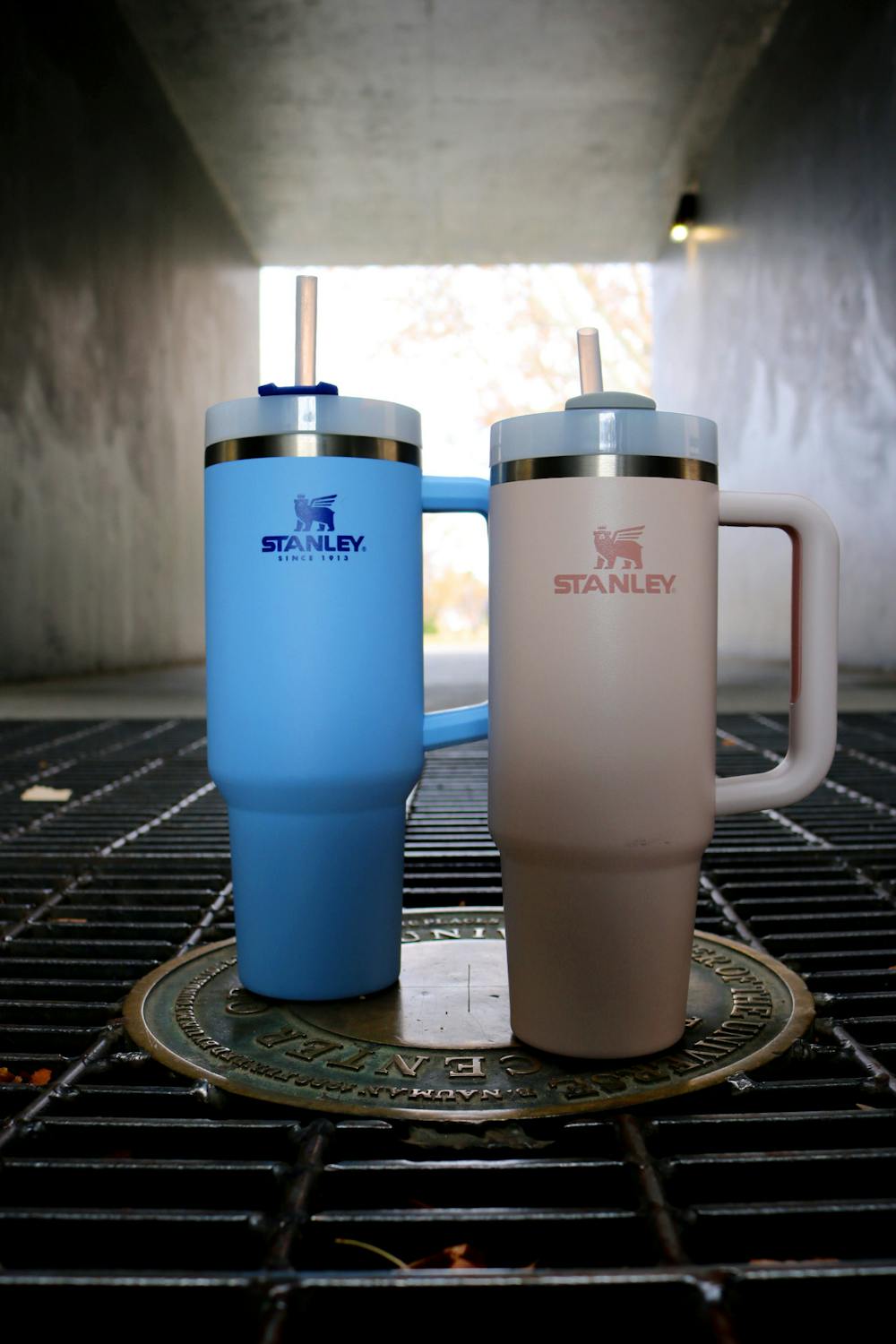It’s no secret that the environment has been troubled for quite a long time now. Humans, unfortunately, do not live in an environment of endless resources. However, sustainability practices are becoming increasingly more common – such as recycling, composting or thrifting.
Evidently, not all sustainable practices are created equal.
An absence from the recent media may cause someone to see two reusable water bottles – such as a Serborni bottle from Amazon and a Stanley bottle – but see no difference. The former water bottle is deemed a “dupe” by the public – a more affordable option compared to the latter. These bottles both hold beverages, maintain temperature, are sleek and are convenient. Seemingly, the main difference is that they vary in price and, oddly enough, levels of popularity.
A Stanley cup has become a necessary, or even crucial, purchase for many millennials and members of Gen Z. Selling for an average of $35 and above per unit, Stanley cups are outrageously expensive for what they are and have become a status symbol, even around campus.
A recent article by Forbes questioned the cup’s popularity and found that many TikTok users have been buying Stanleys mainly to accessorize. Since the craze grew, young kids from elementary to middle school have reported being bullied for having non-Stanley cups, according to the NY Post. Strangest of all, many people posted themselves camped outside of Target stores, some overnight, for a chance at a limited edition version of the cup, according to the New York Times.
Why this cup? Especially following the 2016 Hydro Flask craze. The New York Times suggested as early as 2022 – when the cup first started to flood TikTok’s “For You” Page – that the popularity originated from a marketing makeover, which saw the cups hit shelves in more trendy, fashionable colors. These colors were ones cleverly coined “pale millennial shades” by reporter Danya Issawi.
Hydro Flasks also came in tons of trendy colors, and some are even considered dupes for Stanleys. Did those who bought into that trend dump their cups for Stanleys? Based on the massive collections by passionate Stanley enthusiasts, it seems like these trends have little to do with preservation and longevity, and more to do with fast-fashion – temporary trends.
The HydroFlask craze was, to put it bluntly, a bit embarrassing – both to witness and be excluded from. Trends, some as simple as a popular water bottle, being outrageously expensive and inaccessible to those without the money to spend are somewhat demeaning. There’s an odd feeling of judgment, and financial inequality, for something very simple.
Sustainability aside, these cups are must-haves because everyone else has them. They’re trendy. This desire for a Stanley may just be like every other trend that comes and goes. However, this massive uptick in Stanley purchases does play a role in fresh water preservation, as well as plastic consumption.
Many students around campus can be seen carrying their Stanleys. Paolo Serino, a film major at the University of New Mexico, did not camp outside of a Target.
“I was gifted a Stanley cup over the holidays, and although it’s functional, the hype is not deserved,” Serino said.
A positive aspect of these cups is that they encourage people to reduce waste. As a supporter of sustainability practices, Serino said that they can be a great step, but it has been executed in a distasteful way. Many buyers find a need to have multiples of the product where one should suffice, leading to wasteful consumption.
Get content from The Daily Lobo delivered to your inbox
“The business model of water bottles being collectibles and having prices become artificially inflated goes against the sustainable appeal entirely,” Serino said.
The idea of sustainability should be something accessible to all – especially if the goal is to make a large enough impact to support the environment – and the exclusivity and charge of the Stanley craze do not support that overall goal. Any small step is a good step. It shouldn’t have to be a trendy step, especially if these cups aren’t without flaws.
Another student, Kyle Tarango, has grown a love-hate relationship with his Stanley. He told a horror story of his cup having a seal leak and consequently ruining his laptop with water damage. This is not an isolated issue, according to the New York Times article that explains the leaky design flaw of many of the cups, and it also mentions cheaper, higher-quality dupes.
If reusable and sustainable products are something you’re looking for, definitely go for it and accessorize with your bottle of choice however desired – but don’t camp outside of a Target or bully your peers for having a cup with a different logo.
Doing your part to help cut down plastic waste and making sure you stay hydrated is important, but there’s no reason to treat these things as anything more than they are: cups.
Sadie Hopkins is a freelance reporter for the Daily Lobo. She can be reached at culture@dailylobo.com






